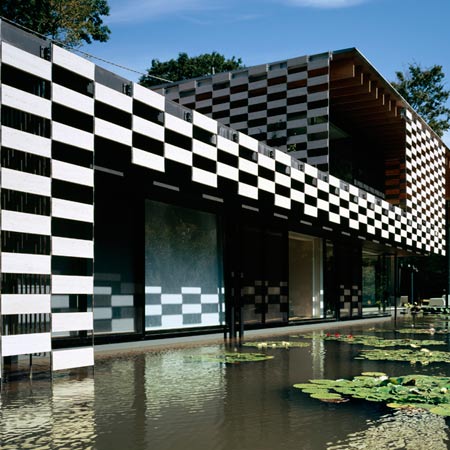
Stone Museum, Nasu, Tochigi (1996-2000). Outside views Photo by Peppe Maisto
Kuma cuts, folds, connects, overlaps, weaves, repeats to infinity a connective principle, which addresses, narrates. The subtle oscillations between abstraction and the sensitive manifestation of the material link back to a “sensitive approach” to architecture, a principle which Kuma revives from Japanese art and tradition.
Assuming as a key to interpretation the characteristics with which Kuma on each occasion tackles the theme of stone – massiveness, lightness, fineness, slenderness, suspension, incision, deformation and erosion – it is possible to trace a thematic continuity between figurative solutions that are different yet “correlated” in the principle which dictated their genesis. Stone and its versatility: this is the theme tackled by Kuma. The exercise has been carried out on an apparently paradoxical ridge of interpretation: the immateriality of architecture. A “constructed immateriality”, acting on the rapports between material and light, on tactile sensations, on meanings related to the “construction of forms”.
The master Kengo Kuma’s ( ) interest in stone, in its being a pure and variegated material, develops within a thematic unity in which we can identify the hidden genealogy, the origins, starting with the Stone Museum and continuing with the Louis Vuitton building in Osaka, the Tokyo Agriculture Museum, the Nagasaki Art Museum, Lotus House and the more recent Ciokkura Park shopping centre and Padiglione of Verona for in Marmomacc 2007.
(Gaston Bachelard, Causeries, Aldephi, Milano, 2007, p.10)
“Poets translate into images the enchantment of the material…”
ArchitetturadipietraArchitettura di pietra. BlogISSN 2280-434Xedited by Alfonso Acocella
SOFT-STONEStone origami « blog
Комментариев нет:
Отправить комментарий